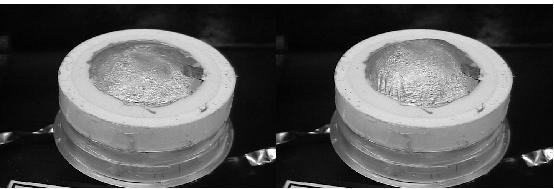Surface mounted actuators for flow control
Surface mounted actuators represent one possible solution to the problems of drag minimization in boundary layers, re-attachment of separated flows and enhancement of turbulent mixing. The actuator shown below has been fabricated from an Electrically Activated Polymer (EAP). The significant advantage of these actuators, compared to hydraulic or pneumatic actuators, is that they are electrically driven as a result they can be distributed across a control surface and addressed in a complex fashion.

The image below shows an actuator placed upstream of the root of an airfoil. The image to the left shows the formation of a coherent trailing vortex pair at the root of the airfoil prior to actuation. The image to the right shows the trailing structure after upstream activation of the boundary layer. A significant change in the amount of mixing appears to have occurred.
The development of low order models to describe flows over wavy surfaces has opened the way for the development of meaningful control strategies based around distributed surface mounted actuators. In the image shown below an actuator has been placed in a water channel and activated. The flow visualization images show the formation of a transient trailing pair behind the actuator that may be then utilized to modify the formation of "streaks" in the boundary layer.
